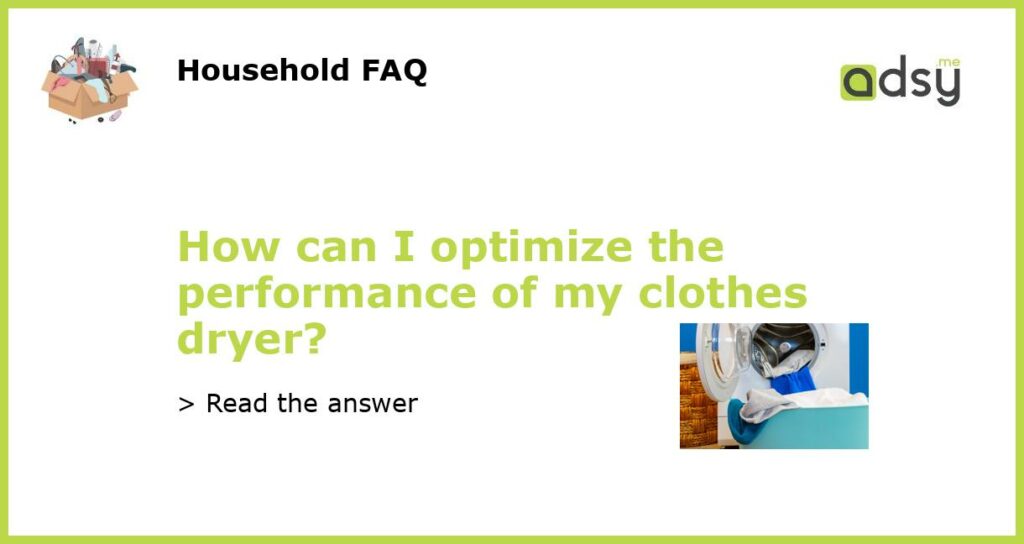Understand the basics of your clothes dryer
Before you can optimize the performance of your clothes dryer, it’s important to understand how it works. The basic principle is simple: hot air is blown through tumbling clothes, causing moisture to evaporate and exit through the dryer vent. However, there are several factors that can affect how well your dryer performs, such as the size and type of load you’re drying, the heat setting you choose, and the condition of your dryer’s lint trap and vent. Make sure you have a good understanding of these fundamentals before moving on to more advanced optimization techniques.
Clean your lint trap regularly
One of the easiest ways to improve your dryer’s performance is to clean the lint trap after every load. A clogged lint trap prevents proper air flow through the dryer, which can lead to longer drying times, overheating, and even fires. Take a few seconds to remove any lint buildup from the trap before starting a new load, and consider giving it a more thorough cleaning every few months with a soft brush and mild soap.
Check your dryer vent for clogs
In addition to the lint trap, your dryer’s vent can become clogged with lint, dust, and other debris over time. This can cause similar problems to a clogged lint trap, as well as increase your energy bills and put unnecessary strain on your dryer. Check your vent regularly for any signs of clogging, such as reduced air flow or excess moisture around the vent. If you suspect a clog, consider hiring a professional to clean it out or investing in a vent cleaning tool.
Choose the right heat setting for your load
Using the right heat setting for your load can also have a big impact on your dryer’s performance. Delicate fabrics and small loads may only need a low or medium heat setting, while heavier fabrics and larger loads may require a higher heat setting to dry thoroughly. Using the wrong setting can lead to longer drying times, damaged fabrics, or even clothing shrinkage. Always check the label on your clothing for the manufacturer’s recommended drying instructions, and adjust your heat setting accordingly.
Consider upgrading to a more efficient dryer
If you’ve tried all of these optimization techniques and still find yourself struggling with long drying times, it may be time to upgrade to a more efficient dryer. Newer models often come with features like moisture sensors, which can automatically detect when your clothes are dry and turn off the dryer, saving energy and reducing wear and tear on your clothes. Look for a model with a high Energy Star rating to ensure maximum efficiency, and consider investing in a dryer rack or clothesline for even more eco-friendly drying options.






